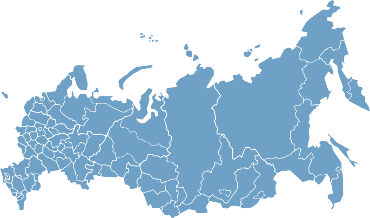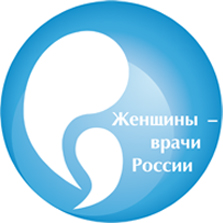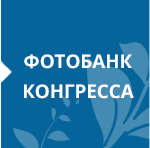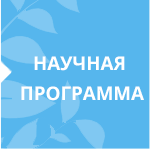
Russia (from Greek. Ρωσία — Rus, the official name of Russia is the Russian Federation, abbreviated name RF is also used) is a transcontinental state, covering much of Eastern and North-Eastern Europe and the whole of northern Asia. The capital of Russia is Moscow. The official language of Russia is Russian.
According to the Constitution of Russia, it is a republic with federative structure, wherein the President is the head of state and the Prime Minister is the head of government. In May 2012 Vladimir Putin became the President of the Russian Federation. The Prime Minister is Dmitry Medvedev.
The country comprises eighty-five federal territorial entities; 46 of them are oblasts (regions), 22 —republics, 9 — krais (territories), 3 — federal cities, 4 — autonomous okrugs (districts) и 1 —autonomous oblast (region).
According to the data of the World Bank the volume of Russia's GDP for 2014 made 3,745 USD trillion (25 636 USD per person). Currency : Russian ruble.
The population of Russia is over 146 519 759 million people at the beginning of 2016. In terms of population, Russia is the ninth largest country in the world. Russia is a multinational state which houses more than 100 different ethnic groups, representing a multiplicity of national histories and cultures and distinct language groups. The majority of the population (about 75 %) are Orthodox Christians, thus Russia is the country with the largest Orthodox population in the world.
According to the Constitution of Russia, its total area is 17 125 407 sq.km. Russia shares borders with eighteen countries - more than any other state in the world. This includes two partially recognized countries. Russia shares land borders with the following states: Norway, Finland, Estonia, Latvia, Lithuania, Poland, Belarus, Ukraine , Abkhazia , Georgia, South Ossetia , Azerbaijan , Kazakhstan, China , Mongolia, North Korea. It shares maritime borders with Japan by the Sea of Okhotsk and the U.S. state of Alaska across the Bering Strait.
Russia is the largest country in the world stretching over an area of 17 125 407 sq.km., it is the fifth largest economy with a GDP of 3,745 USD trillion (25 636 USD per person) and in terms of population, Russia is the ninth largest country in the world.
The current Constitution of the Russian Federation was adopted by national referendum on December 12, 1993. At present the current Constitution of Russia has a number of important Amendments accepted in 2008. The given Amendments , which increased the presidential term of the President of the Russian Federation from 4 to 6 years and the term of State Duma deputies from 4 to 5 years, caused a massive international outcry.
The main institutions of the Russian statehood were formed during the first years of the independent development of the country, but in the course of major reforms of early 2000-s significant alterations to their legal foundation were made.
The system of bodies of state power of the territorial entities of the Russian Federation is determined by the general principles, established by the Federation. Each region has a Legislative branch (representative-parliament, house of assembly) and Executive branch (Government). Many of them also have chief executive officers posts (President, Governor), authorized by Legislative branches of the territorial entities of the Federation upon the recommendation of the President of Russia. They can hold office for an unlimited number of terms.
Russia is also subdivided into 9 federal districts, each administered by an envoy appointed by the President of Russia.
In accordance with the Constitution the Legislative power is exercised by the Federal Assembly of Russia - the bicameral parliament made up of the Council of Federation and the State Duma , the so called Upper and Lower Houses. Each Federal territorial entity sends two representatives to the Council of Federation. In 1993 the members of the Council of Federation were elected by the population; in 1995 their places were taken by Governors (presidents) and speakers of regional legislative assemblies , and from 2000 - by the appointed and elected representatives of Executive and Legislative branches of the Federal territorial entities correspondingly. The State Duma consists of 450 deputies and is elected by national vote from party lists for a term of 5 years.
Russia is divided into twelve large economical regions: Severo-Zapady (North-West), Severny (North), Tsentralny (Central) , Volgo-Viatsky, Tesntralno-Tcheroziomny, Povolzhsky, Severo-Kavkazsky, Uralsky, Sapadno-Sibirsky, Vostochno-Sibirsky, Dalnevostochny (Far East) and Kaliningradsky.
Health protection of the citizens of Russia is a comprehensive set of political, economic, legislative, social, cultural, scientific, medical , sanitary and hygienic and anti-epidemic measures, aimed at maintaining and strengthening physical and psychic health of each person, improving longevity and supporting vitality, providing medical assistance in case of disease.
The number of hospitals at the end of 2007 made approximately 6,8 thousand, the number of hospital beds — 1522 thousand (107,2 per 10 000 population). The share of private clinics in Russia does not exceed 5-10 % of the total number of clinics. In Russia there are 707 thousand doctors of different medical specialties (at the end of 2007 ).
Growth in income of the population at large «on the average» over the past ten years has been provided by the growth in income of the richest fifth part of the population , and first of all, its upper crust, amounting to 0,5 %. Only 15-20% of the population may be designated as slowly growing "middle class" .
The system of education in Russia comprises preschool , basic and professional education. Basic education has several levels: elementary, basic and secondary, as well as special (correction) and additional education of children. Professional education also has several levels: elementary, secondary and higher, as well as post-graduate and supplementary professional education.
In Russia there are approximately 7 mln students (including 3,5 mln full-time course) and 1068 higher education institutions, including 413 non-state ( as of 2005). Besides, there are 2,9 thousand secondary professional schools (including 217 non-state), with approximately 2,5 mln students.
In 2007 within the Bologna Process the government of the Russian Federation has approved the bill of transition to two-level higher education system: baccalaureate — Master course. One-level system ( with obtaining a Specialist Degree) remains in some professions : medical or military.
In Russia there are more than 4 000 organizations engaged in research and development. About 70 % of these organizations are state-run.
Russia is a multinational country, it houses more than 100 different ethnic groups, representing a multiplicity of national histories and cultures. The key factor of the development of Russian material and spiritual culture was connected with the influence of Orthodoxy and various forms of pagan beliefs of local population during different historical periods, as well as significant external influence , in particular Tartar and West European. The manifold heritage can be traced in a greater or lesser degree in all the forms of national art.




